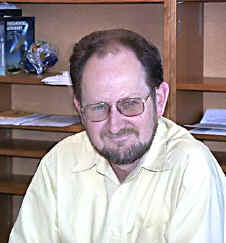
November 19, 1999 NZ Education Review


Glen Mackie, Peter Cottrell, Phil Yock
Major discoveries about ourselves, our world and the universe we live in have usually been visionary. That vision has been successfully generated in many cases by a unique synthesis between universities and researchers. Fundamental discoveries have also come about due to taking chances, or if you like opportunities. The outcomes from the discoveries of Darwin (Theory of Evolution), Fleming and Florey (Penicillin), Watson and Crick (DNA), the Leakeys (Human Origins), Wegener (Continental Drift), Rutherford (Atomic Structure) and Hubble (Expansion of the Universe) have had revolutionary effects on us all.
The present government's attempts to promote a "Knowledge Society" is to be commended. However we should not be satisfied with a society that can easily digest and utilize changes in information and knowledge, but we must strive for a society in which people have the capacity to invent, think logically, create and make those changes. The former scenario is the easy option that will have dire consequences. The later scenario involves all of us, government, universities, businesses and teachers investing in the future educational, research and technological opportunities available to young New Zealanders.
We could follow the exciting vision of South Africa. Not long ago, in a country still rebuilding after the apartheid years, came an incredible announcement. In June 1998 the South African Minister of Arts, Culture, Science & Technology, Mr Lionel Mtshali, stated that South Africa had committed $US10 million towards the construction of the 10 metre Southern African Large Telescope (SALT), which would become a flagship science project in the new South Africa. This is half the construction price of this cost-efficient telescope.
Professor Khotso Mokhele, the head of South Africa's Foundation
for Research and Development, says that the telescope will be used to
help in graduate training of black South Africans, but first and
foremost will permit South Africans and astronomers worldwide to do
first class astronomy on southern skies. Instead of looking back,
South Africa has decided to kick-start its science and technology base
with SALT.

Computer image of the proposed 10-m class Southern African Large Telescope (SALT) superimposed on a photograph of some of the existing telescopes at the South African Astronomical Observatory site near Sutherland, in the Northern Cape region of South Africa.
As of October 1999, approximately 85% of the total construction cost has been found due to firm commitments from the Polish government, and universities in Germany and the United States of America. Groundbreaking for the start of construction of the telescope is anticipated in early 2000. The New Zealand astronomy and astrophysics community has been invited to join the SALT project and the community has identified participation in SALT as its main recommendation for future growth.
Building and operating such a facility involves several factors - a knowledge push - people development - enterprise emphasis, all themes of the recent (August 1999) New Zealand Government's Bright Future initiative that includes research, science and technology. We believe that SALT provides an exciting opportunity for the physical sciences in New Zealand to meet many of the challenges of Bright Future. It is immaterial that the facility is in South Africa. Astronomers will use the telescope via the Internet. These days all countries participating in front-line astrophysics use facilities at the best observing sites and New Zealand does not have a suitable site for such a 10 metre diameter telescope.
A New Zealand consortium of scientists, engineers and information technologists are seeking partnership in SALT at the 5% level, or about $US1 million which would be a viable contribution to the collaboration. Part of New Zealand's contribution could include a substantial contract to build one of the telescope's initial instruments in New Zealand that would provide opportunities for optical design and fabrication within the universities and Crown Research Institutes. Such a project would provide substantial spin-offs in a number of technological fields - optical engineering and fabrication and detector technology.
How can New Zealand participate in this exciting opportunity? At present New Zealand has an extremely poor level of R&D investment from both public and private sectors. The required buy-in price to SALT is quite small however suggesting that our potential involvement will have more to do with will and foresight rather than ways and means. The "cost" to the country, if we do not join a major international science project, will be far more than $US1 million. All strong economy countries substantially invest in pure or "blue-sky" research as part of their total investment in R&D.
Universities should always aim to do world-class research and teaching. New Zealand universities with a stake in SALT would attract the best local and international students and staff. Students would have access to a world-class scientific facility. It would also provide a way of retaining New Zealand trained scientists and technologists. Astronomy and astrophysics has a great legacy in New Zealand, with names like Kerr, Axford, Tinsley and Manchester and SALT would continue that. Astrophysics is a broad enough science that it will also lead to skill training of scientists and technologists in associated areas (computing, optics, and chemistry). It could be thought of as a high profile "seed science or incubator".

Clockwise from left, Dr Jenni Adams, Samantha Holdsworth, Dr Karen Pollard, Jennifer McSaveney and Jovan Skuljan discussing research data in the Department of Physics & Astronomy at the University of Canterbury. Dr Adams is a lecturer in the Department, a recent recipient of a Marsden Fund grant and a former Rhodes Scholar. Dr Pollard is a temporary lecturer in the same Department and a recent holder of a prestigeous New Zealand Foundation for Research, Science & Technology postdoctoral fellowship.
Astronomy is easily accessible to all. The results of SALT would be available to all New Zealanders via the World Wide Web for a variety of education purposes. South Africa is planning an extensive range of displays and learning media that we could use and expand upon at our regional observatories and science centres. Astronomy is the most attractive physical science to the general public. It advertises science as an exciting career option and demystifies it. People can see the night sky, the planets and stars, unlike quarks or DNA.
The wide impact of the science of astronomy and astrophysics is easy to see. Public science literacy improved dramatically with the release of two books. "Cosmos" by Carl Sagan is the best selling English-language science book in history. Yet even the more intellectually demanding "A Brief History of Time" by Stephen Hawking spent over 2 years on the New York Times best seller list. People are not shy of science if it is presented well. Astronomy also has a synergism with other sciences including the diverse mix of high-energy and particle physics, geophysics (continental drift, geology of other planets), upper atmosphere sciences (Earth's environment, effects of the solar cycle), medicine (eg. software techniques used in image tomography) and industry (eg. low-light level electronic detectors).
SALT will allow New Zealand to join the majority of other nations (ie. U.S.A., U.K., Japan, Australia, Canada and most European countries) involved in astronomical research that have already joined existing large telescope projects (eg. European Southern Observatory-Very Large Telescope, Keck I and II, Gemini North and South, Subaru, HET and Magellan). Some of the research that can be done with SALT include planetary searches, studies of the early chemical evolution of our Galaxy and its neighbours, identification of transient events (eg. Gamma-ray Bursters, Supernovae), studies of the formation and evolution of normal galaxies, determining physical processes in active galactic nuclei (eg. Quasars) that harbour supermassive black holes and studies of other objects in the distant, early Universe. Many of these investigations could be done using a high-tech New Zealand built instrument.

NGC 4414 imaged by Hubble Space Telescope. Courtesy NASA, Hubble Heritage Project and Space Telescope Science Institute.
New Zealand has an opportunity to join a major international science project, at an economical cost, that would greatly develop its science, technology and research base. At the same time, New Zealand would be assisting the cultural development of another nation in a tangible way. Astronomers and astrophysicists are not the only ones with a need for vision.
For latest information about New Zealand's bid to join SALT see
www.vuw.ac.nz/~mackie/NZ-SALT/nz-salt.html
Glen Mackie, Peter Cottrell, Phil Yock
The authors are all research astronomers. Dr Glen Mackie (Glen.Mackie@vuw.ac.nz) is at the School of Chemical and Physical Sciences, Victoria University Wellington; Associate Professor Peter Cottrell (P.Cottrell@phys.canterbury.ac.nz) is the Head of the Department of Physics and Astronomy, University of Canterbury; Associate Professor Phil Yock (p.yock@auckland.ac.nz) is in the Faculty of Science at the University of Auckland.